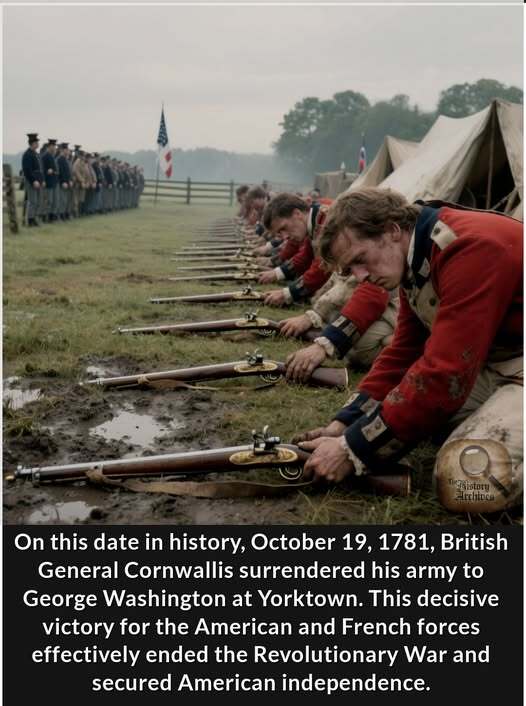
Some very important American History :
On this date in history, October 19, 1781, the world was turned upside down.
After weeks of being trapped and bombarded at Yorktown, Virginia, British General Lord Cornwallis finally saw that his position was hopeless.
His forces were surrounded on land by a combined army of American and French soldiers led by General George Washington, and his sea escape was cut off by the French Navy.
On that day, the formal surrender took place. More than 7,000 British soldiers laid down their arms, marking the most significant defeat for the Crown in the entire war.
Interestingly, General Cornwallis claimed to be ill and did not attend the ceremony himself. He sent his second-in-command, General Charles O'Hara, in his place.
O'Hara first attempted to surrender his sword to the French Commander, who then directed him to General Washington. Washington, upholding military protocol, had O'Hara present the sword to his own second-in-command, Benjamin Lincoln.
This was a poignant moment, as it was Lincoln who had been forced to surrender to the British at Charleston a year earlier.
As the defeated British soldiers marched out to lay down their weapons, their bands are said to have played a tune called “The World Turned Upside Down.”
The surrender at Yorktown effectively ended major combat in the American Revolution and was the final blow that led to negotiations for peace.
This victory secured American independence and laid the foundation for the United States of America.
(The History Archives)
Surrounding the British:
In September 1781, American and French troops, totaling about 14,000 soldiers, began a siege of the British army led by General Lord Cornwallis in Yorktown, Virginia.
French naval blockade:
Crucially, the French navy, commanded by Admiral de Grasse, blocked the Chesapeake Bay, preventing the British from receiving reinforcements or evacuating by sea.
Siege and artillery bombardment:
The Franco-American forces dug trenches and bombarded the British lines with artillery for nearly two weeks, disabling most of the British guns.
Assault on redoubts:
On October 14, the Allies launched an assault and captured two key British redoubts (fortified positions) to get closer to the main British lines.
Surrender:
With his position untenable and British reinforcements delayed, Cornwallis surrendered his army of more than 7,000 men on October 19, 1781.
Consequences:
This defeat was devastating for the British and led to peace negotiations, culminating in the signing of the Treaty of Paris in 1783, which formally recognized the United States as an independent nation.

Congratulations to @SGKusmertz. Your question was chosen for tonight’s Ask Greg and the Panelists
In a crisis, are you the go to person, or do you fall apart?














